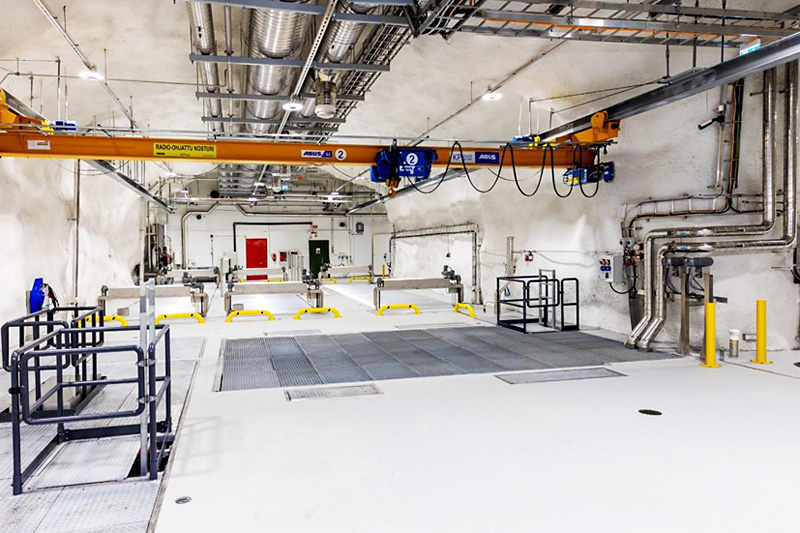Expanding the Hydrogen Economy Requires Cross-Border Cooperation

The development of the hydrogen economy in Europe is moving from talk to action, with Finland actively participating in this progress. However, cooperation between European countries and at the national level is now crucial to enable growth. This is the assessment of Sara Kärki, Senior Vice President, Hydrogen Development at the gas transmission system operator Gasgrid and Chair of the European Hydrogen Backbone (EHB) group, who shared her insights on Fimpec’s Kumppanit podcast.
Discussions on the hydrogen economy and its importance in the green transition have been ongoing for some time, but now the focus is shifting to action, with the first projects well underway. In Finland, one of the active players is Gasgrid, a gas transmission system operator that is involved in three hydrogen infrastructure projects classified as EU Projects of Common Interest (PCI), which support the development of the hydrogen economy in Finland and enable the export of hydrogen and its derivatives.
Sara Kärki, Senior Vice President, Hydrogen Development at Gasgrid Finland, emphasizes the importance of cross-border cooperation in enabling the growth of the hydrogen economy. From Finland’s perspective, participation in and contribution to this cooperation is essential.
“As a small, northern country, it is vital for Finland to be part of the joint European development. At Gasgrid, we actively collaborate with neighboring countries and various transmission system operators, advancing concrete projects together. This facilitates the connection between hydrogen and its derivatives producers and consumers, regardless of national borders.”
Julius Stenius, a hydrogen expert and management consultant at Fimpec, agrees that international cooperation is necessary for Finland to become a hydrogen leader. Through this, Finland could potentially help fill the large hydrogen storage needs in Central Europe.
“It’s important that cooperation can harmonize regulations and create synergies,” he notes.
Kärki adds that this is a crucial issue from the perspective of hydrogen and its derivatives. Shared rules and a common European market support projects and create the conditions necessary for investments.
“EU directives and regulations play a significant role. In Finland, we hope to avoid complex legislation or regulation, allowing the competitiveness of technologies to determine outcomes. However, we must recognize that since decisions are largely made at tables in Central Europe, we need to be even more actively involved in bringing a northern perspective to the table. I believe that active cooperation can create the conditions for market development and help regulation evolve in a way that facilitates investments.”
Finland Could Play a Key Role in Europe’s Hydrogen Economy
Kärki and Stenius also agree that Finland has strong potential to play a significant role in Europe’s hydrogen economy.
“Finland has good conditions for producing green hydrogen. We have considerable wind and solar energy potential, competitive electricity prices, robust power grids, and biogenic carbon dioxide emissions from the forest industry, which can be used to produce value-added products. Additionally, our society is highly predictable, and while there are challenges, our permitting processes have certain advantages,” Kärki lists.
“There are also several interesting hydrogen projects already underway in Finland. These strengthen Finland’s image as a hydrogen country and serve as forerunners for future projects,” Stenius adds.
However, this development will not happen on its own; Kärki stresses that now all stakeholders must work together to fully exploit the opportunities offered by the hydrogen economy. Nationally, there must be committed goals, but local conditions also need to be created to enable investment projects.
“Some countries can support hydrogen projects in ways that Finland cannot. Therefore, we need to create investment conditions in a different manner. To me, this means active cooperation starting at the local level.”
Infrastructure Development Offers Opportunities for Other Players
A critical requirement for the rise of the hydrogen economy is the necessary infrastructure. Kärki says that Gasgrid has consciously taken an active role in its development.
“We want to help create the market and transmission platform, whether it’s for hydrogen, synthetic methane, or carbon dioxide. We started with the goal of creating opportunities for other players to move forward. We analyzed this a few years ago and decided to take the lead by doing things openly, communicating with various stakeholders, and collecting feedback on the right direction and location for infrastructure development.”
“It’s an interesting puzzle. A key question is where to build facilities, and we need to find the right solutions to anticipate future demand. The projects are progressing, and as we move forward systematically and gather feedback, our understanding becomes clearer. We are now beginning a dialogue with regions and municipalities from a land-use perspective to determine the best routing. They have in-depth knowledge of local actors.”
What Will Happen in the Next Ten Years?
In the podcast, Sara Kärki and Julius Stenius also offer their predictions on the state of the hydrogen economy ten years from now. Sara Kärki foresees interesting years ahead.
“The number of hydrogen projects has quintupled in a year, and in addition to the potential, real projects are now starting. It’s often forgotten that these investment projects are long-term. It can easily take five years of development before an investment decision can be made. The hydrogen economy is coming, but it will take a few more years for projects to materialize in the construction phase.”
“Ten years from now, we hope that in Finland the infrastructure will be in place, the market will be well established, and things will be progressing. Hopefully, export channels for various forms of energy will have been established, and international business will be up and running. Finland holds a strong hand, but international competition is fierce. We need to keep the broader geopolitical and energy policy picture in mind, get to work, and push forward with various projects. Actions will be decisive,” she says.
“While hydrogen poses many technical challenges, there doesn’t appear to be anything that cannot be overcome with good planning and the right equipment investments. I believe that Finland’s future model will resemble a microcosm of Europe’s hydrogen market. In the north, clean energy, hydrogen, and derivatives will be produced, which will then be used further south to meet growing demand. We just need to play our cards right,” Stenius concludes.
Sara Kärki and Julius Stenius were guests on the Fimpec Kumppanit podcast hosted by Maiju Aaltonen (Hirvikallio).
Listen to Kumppanit Podcast Episode 9: Collaboration for Sustainable Competitiveness in Finland’s Hydrogen Economy. The podcast is available only in Finnish.


